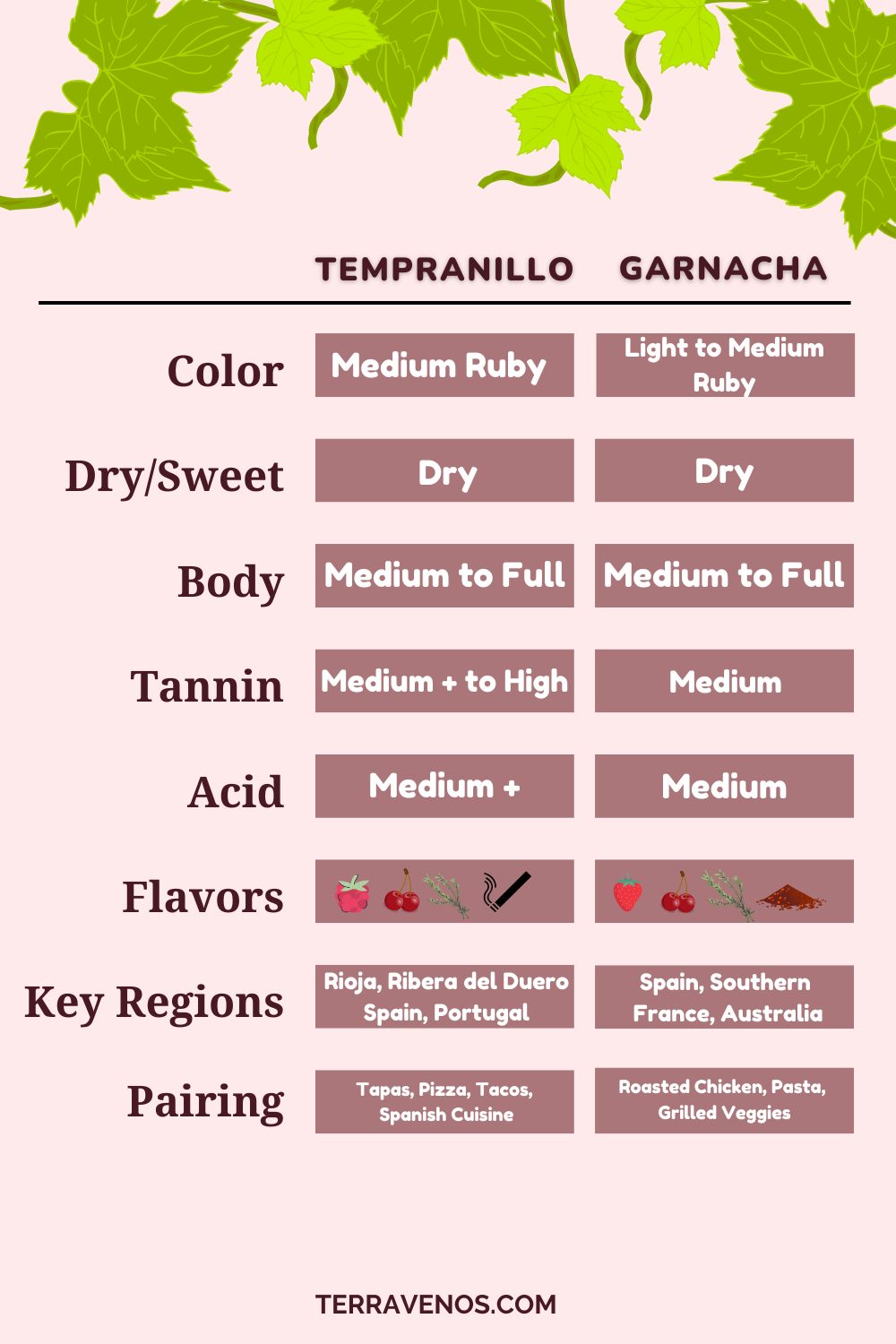
Two Spanish red wines, Tempranillo vs Garnacha, should be in your wine cellar.
Garnacha and Tempranillo both have red fruit. Garnacha has softer tannin and higher alcohol than Tempranillo. Both can be blended together.
Comparing Tempranillo vs Garnacha makes sense. They have a shared history. These are both popular red wines you’ll come across regularly.
Tempranillo Basics: Spain’s Red Wine
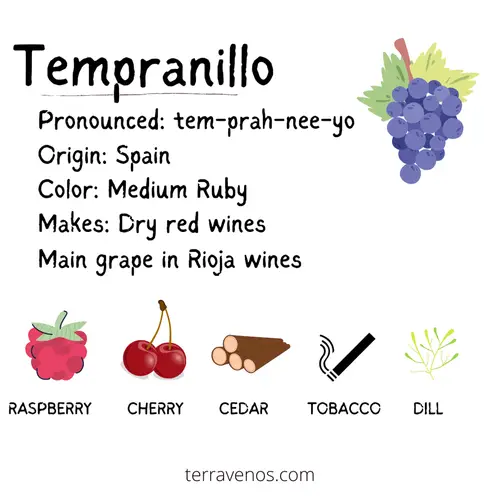
Tempranillo, a well-regarded grape originating from Spain, has gained worldwide recognition for its robust character. Now a global favorite, Tempranillo thrives in vineyards worldwide, from Spain’s Rioja and Ribera del Duero to New World regions.
With its deep crimson color, Tempranillo offers a palate of red berries complemented by subtle hints of coconut, herb, and cedar. This flavorful profile has made it popular among wine enthusiasts globally, securing its place in cellars.
Spain, the birthplace of Tempranillo, showcases its versatility from everyday wines to prestigious reserva and gran reserva selections.
Fun Wine Fact: Tempranillo gets its name from the Spanish word “temprano,” meaning early, as it usually ripens before many other grape varieties.
Helpful Tip: Here’s a complete guide to Tempranillo.

Garnacha Basics: Bountiful Red Fruit
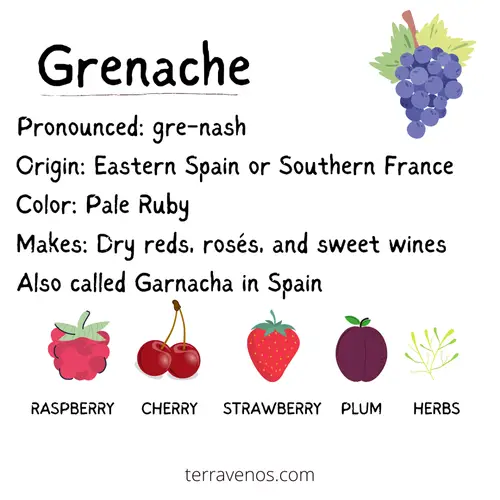
Garnacha, known as Grenache outside of Spain. Its origins can be traced to Spain, and it has gained prominence worldwide.
Grenache offers a medium to full body with distinctive flavors. It is often associated with red fruit notes, a touch of herbal nuances, and a hint of spiciness. Its moderate tannin levels make it an appealing option for a variety of palates.
Fun Wine Fact: Grenache is often used in blends with Syrah and Mourvedre – you’ll see this as “GSM” on the label, or Grenache, Syrah, Mourvedre.
Wine Comparison: Tempranillo vs Grenache
Here’s a quick side-by-side comparison that covers the most common styles of Tempranillo and Grenache:
| Characteristics | Tempranillo | Garnacha |
|---|---|---|
| Hue | Deep ruby to garnet | Medium to dark ruby |
| Color | Red | Red |
| Aromas | Red berries, plum, tomato, coconut | Red and black fruit, spice |
| Tannins | Moderate to high | Moderate |
| Acid | Moderate | Moderate |
| Alcohol (%) | 13-15% | 14-15%+ |
| Body | Medium to full | Medium to full |
| Intensity | Moderate to pronounced | Moderate |
| Key Growing Regions | Spain (Rioja), Argentina, Portugal | Spain (Rioja), France (Rhone), Italy, California |
| Classic Pairings | Grilled meats, chorizo, tapas | BBQ, roasted vegetables, hearty stews |
| Price Range | $10-$50 | $10-$40 |
Tempranillo Wine Profile
- Sweetness: Tempranillo is typically produced in a dry style, offering minimal residual sugar.
- Alcohol: Tempranillo wines generally have a low to moderate alcohol content, ranging from around 12% to 14% ABV.
- Body: Known for its medium to full body, the style of Tempranillo will depend on the growing region and winemaker.
- Tannins: Tempranillo has more pronounced tannins than Garnacha, in the medium to high range.
- Flavor and Aroma Intensity: Tempranillo has juicy red fruit, including cherry, plum, and tomato (tomato leaf); aged Tempranillo can get savory leather notes
- Flavors: The flavor profile often includes red cherry, strawberry, and raspberry, with a touch of coconut and spices.
Garnacha Wine Profile
- Sweetness: Garnacha wines tend to be on the drier side, encompassing a spectrum from dry to off-dry.
- Alcohol: Garnacha wines typically have a moderate to high alcohol content, similar to Tempranillo, ranging from around 13% to 14.5% ABV.
- Body: Garnacha is known for its medium to full body. You may come across lighter, fruit-forward styles, too. Read those labels!
- Tannins: Garnacha showcases moderate tannin levels, contributing to a balanced mouthfeel, often softer than Tempranillo wines.
- Flavor and Aroma Intensity: Garnacha is characterized by intense red fruit notes with herbal and spicy undertones.
- Flavors: The flavor profile often includes red fruits, herbs, and a touch of spiciness.
Are Tempranillo and Garnacha Similar?
Both Tempranillo and Garnacha share a red fruit profile, with raspberry, strawberry, and cherry. They both can also have an herbal quality to them and are the same alcohol level (around 12%-14% abv).
What Is the Difference Between Tempranillo and Garnacha?
Tempranillo is fuller bodied with higher tannins than Garnacha. Tempranillo has a savory quality to it, like tomato leaf. Garnacha can have an herbal note, like dill.
Tempranillo vs. Garnacha: Food Pairings and Serving Temperature
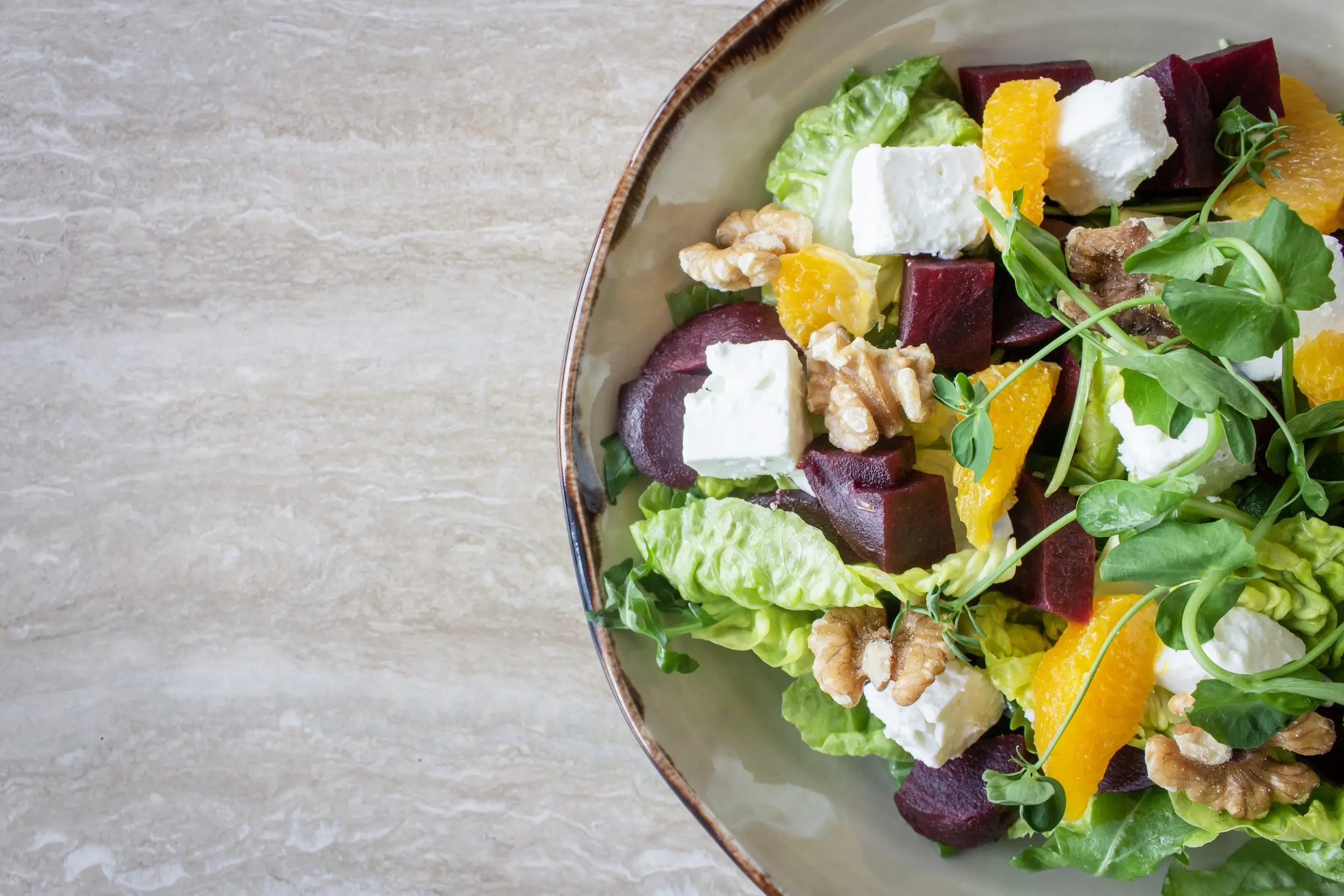
Tempranillo: Tempranillo’s bright red fruit profile makes it an excellent pairing partner for earthy dishes, like lentil soup and paella. Check out: Tempranillo Food Pairing Guide
Grenache Food Pairing: Grenache, with its medium to full body and unique flavor profile, pairs exceptionally well with tapas, Mediterranean cuisine, and green, leafy salads. Think lighter dishes that have acid, citrus, and earthy notes.
Personal Note: I feel Garnacha is more of a summertime cuisine wine, while Tempranillo warms you up on dark winter nights.
Both Tempranillo and Garnacha are best enjoyed at a slightly cool temperature. Place them in the refrigerator for about 10-15 minutes before serving.
Discover More:
Red Wine and Cheese Pairing: What You Need to Know
Tempranillo Cheese Pairing Guide
Which Is More Expensive, Garnacha vs Tempranillo?

When comparing the prices of Tempranillo and Garnacha it’s natural to wonder about their relative costs. Both wines are available at different price points, making them accessible to a wide range of wine budgets.
Helpful Tip: Here’s how a bottle of wine gets priced. This post is a little nerdy, but it’s quite complicated and nuanced depending on where you are in the world and where you’re buying your wine.
Tempranillo Cost
Entry-level Tempranillo wines are typically affordable, ranging from $8 to $10 per bottle. If wine affordability is something you’re thinking about, you’ll find drinkable Tempranillo wines in most wine markets wherever you shop.
If you are looking for premium Tempranillo wines, there are higher-priced bottles available. These bottles, priced around $30 to $50 or higher, offer a more complex and nuanced drinking experience.
Helpful Tip: Look for Rioja DOCG and Ribera del Duero DO quality wines made from Tempranillo. Look for affordable Tempranillo from La Mancha DO.
Garnacha Cost
Garnacha Cost: Similar to Tempranillo, entry-level Grenache wines are typically budget-friendly, usually ranging from $10 to $25 per bottle. These wines are renowned for their unique and affordable character.
On the premium side, Garnacha offers more intense fruit flavors. You’ll immediately notice their pronounced nature. Premium Garnacha wines sourced from renowned regions can have prices ranging from $25 to $40 or more.
Fun Wine Fact: Grenache is often considered an excellent value for its quality, offering a premium taste without the hefty price tag this is thanks to its relative heavy production in the vineyard giving high yields, as well as what is often less-fussy (costly) winemaking.
Which Is Better, Tempranillo or Garnacha?
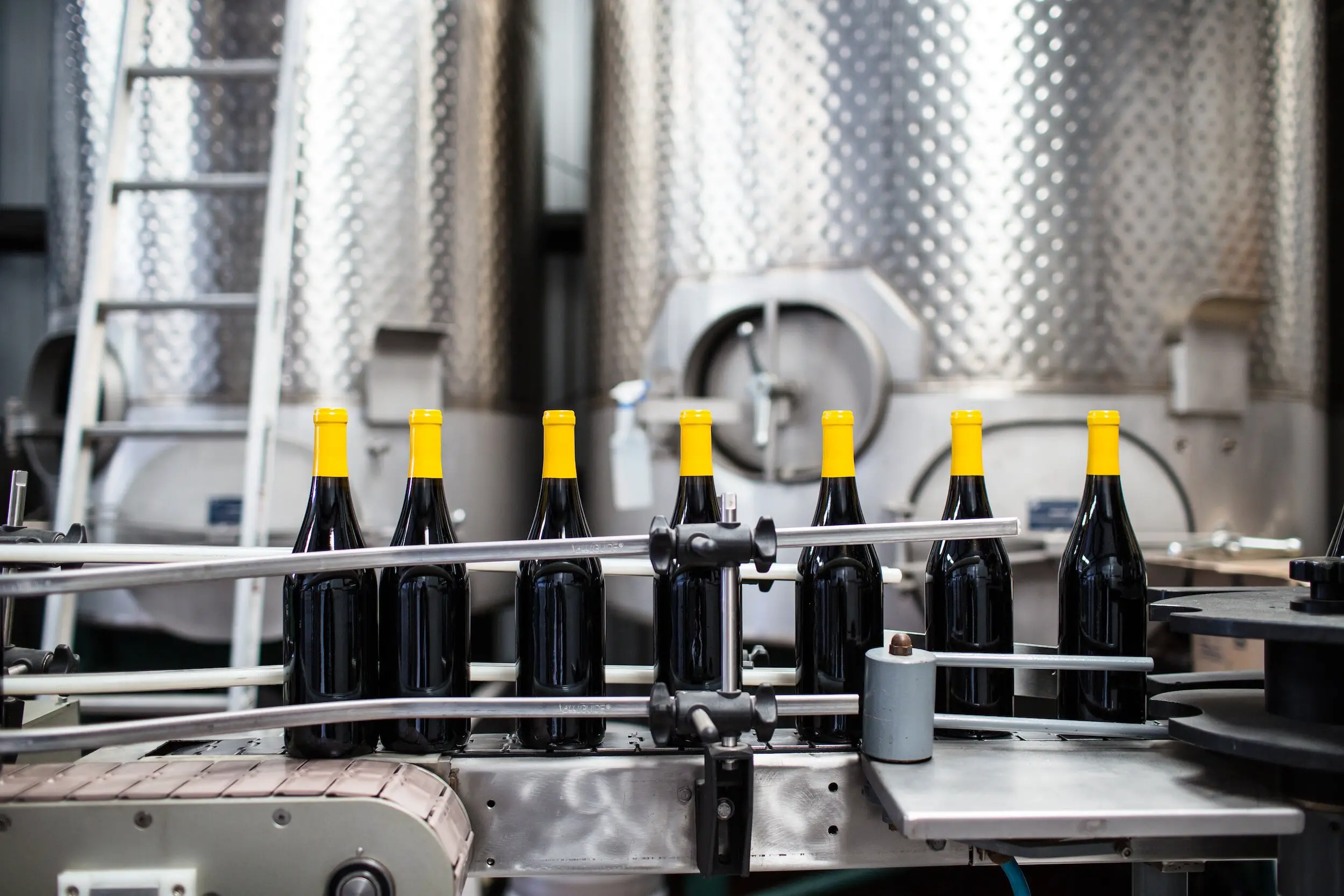
If you enjoy red wines with bright red fruit, a fuller body, noticeable tannins, and a savory quality, then Tempranillo is the better wine for you. If you like fruitier red wines without as much grip in your mouth, then Garnacha is the better choice.
Final Thoughts – Garnacha or Tempranillo?
Both Tempranillo and Garnacha wines go together. If you enjoy Tempranillo, you’re likely going to enjoy Garnacha – and vice versa.
I’m a big fan of side-by-side tastings to tease out the different wine characteristics. A great way to get started with these two wines is to do a side-by-side comparison.
Grab 2 bottles of similarly priced Tempranillo and Garnacha. Invite over a few friends and enjoy an evening of swirling and sipping
Discover: Spanish red wines you need to be drinking
Thirsty for More?
I’m a big believer in doing side-by-side tastings to boost your wine knowledge. Here’s how to host your own wine tasting for beginners.
Check out this post on Merlot vs. Pinot Noir, another popular red wine comparison, along with Shiraz vs. Malbec.
Here’s a full pairing guide for Tempranillo wine.




